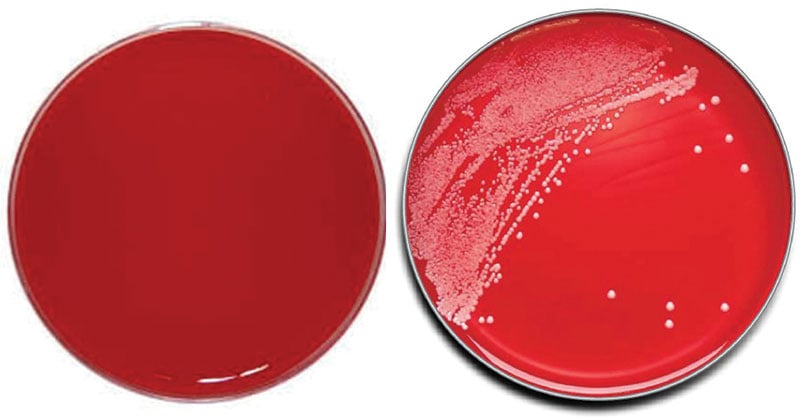- Fastidious organisms having exacting nutritional requirement can be cultivated on infusion media.
- Meat infusions were included in the first media used for the cultivation of bacteria.
- Huntoon prepared a medium using fresh beef heart and peptone which became known as Heart Infusion Agar.
- He demonstrated it could be used to support the growth of nutritionally fastidious microorganisms without the addition of enrichment, such as animal blood.
- Heart Infusion Agar is a general-purpose growth medium. It is recommended for the cultivation of nutritionally fastidious microorganisms and as a basal medium with a variety of applications.

Interesting Science Videos
Composition of Heart Infusion Agar
| Ingredients | Gms/liter |
| Beef heart, infusion form | 500.0 |
| Sodium Chloride | 5.00 |
| Tryptose | 10.00 |
| Agar | 15.00 |
| Demineralized Water | 1000.0 |
Final pH (at 25°C): 7.4 ± 0.2
Principle of Heart Infusion Agar
- Tryptose and beef heart infusion provide nutritional requirements for the pathogenic bacteria.
- Beef heart infusion supply nitrogenous compounds and amino acids necessary for the growth of nutritionally fastidious bacteria.
- Sodium chloride provides essential electrolytes and maintains osmotic equilibrium.
- Agar is a solidifying agent.
Preparation and Method of Use of Heart Infusion Agar
- Suspend 40 grams in 1000 ml of distilled water.
- Heat to boiling to dissolve the medium completely.
- Sterilize by autoclaving at 15 lbs pressure (121°C) for 15 minutes.
- If desired 5% v/v sterile defibrinated blood may be added.
- Mix well and dispense as desired.
- Inoculate and streak the specimen as soon as possible after it is received in the laboratory.
- If the material is being cultured directly from a swab, roll the swab over a small area of the agar surface and streak for isolation.
- Incubate aerobically or in 5-10% CO2 at 33-37°C for 18-24 hours.
- Examine for typical colony morphology
Result Interpretation on Heart Infusion Agar
| Organisms | Growth |
| Escherichia coli | luxuriant growth; beta hemolysis |
| Staphylococcus aureus | Good-luxuriant growth; beta hemolysis |
| Neisseria meningitides | Luxuriant growth; no hemolysis |
| Streptococcus pneumoniae | Good growth; alpha hemolysis |
| Streptococcus pyogenes | Good growth; alpha hemolysis; beta hemolysis |
Uses of Heart Infusion Agar
- It is recommended for use in qualitative procedures for isolation of a wide variety of fastidious microorganisms.
- It can also be used for the cultivation of Vibrio and Streptococci species.
- It is used for mass cultivation of bacteria required in vaccine preparation.
- On the supplementation of blood, Heart Infusion Agar can be used to study hemolytic reactions.
- It can also be supplemented with glucose, horse serum and antibiotics for the cultivation a wide variety of organisms.
- This medium was used for isolation and enumeration of hemolytic Streptococci in milk.
- The deep agar fill can be used as an oxygen gradient to determine the oxygen requirements of the inoculum by observing wherein the tube the growth is prominent.
Limitations
- It is recommended that biochemical, immunological, molecular, or mass spectrometry testing be performed on colonies from pure culture for complete identification.
- Due to the various nutritional requirements of some organisms, occasional isolates may be encountered which fail to grow or grow poorly on this medium.
References
- https://assets.thermofisher.com/TFS-Assets/LSG/manuals/IFU1486.pdf
- http://himedialabs.com/TD/M169.pdf
- https://catalog.hardydiagnostics.com/cp_prod/Content/hugo/HeartInufusionAgar.html
